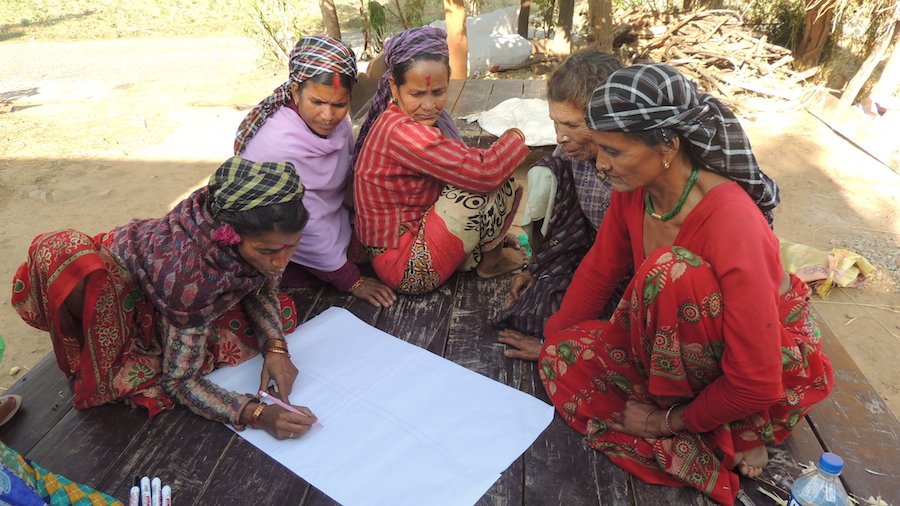The theme for the International Women’s Day this year states a measurable objective: “Planet 50-50 by 2030: Step it up for Gender Equality”. This may sound straightforward and clear, but is actually a highly complex endeavor. One has to consider gendered practices, perceptions, norms and structures, which are based on socially, culturally, and institutionally entrenched assumptions of how women and men perform to conform to gendered norms.
So, what is the process of achieving gender equality – and, more importantly, what are the obstacles?
One way to review the objective of “50-50” is to explore women’s empowerment. Empowerment is a term that is widely used by academics, policy makers and development workers. However, the definition and implementation of the term is vague and contested, perhaps because it’s used in so many sectors. It can be used in a very narrow sense that focuses on specific individuals or demographics, or in very complex ways that deal with structural social change.

These diverse conceptualizations inform development policies and projects to varying degrees. Particularly, development agencies that use interventions as a means of achieving economic empowerment have been accused of using the term as a ‘buzz word.’ The term is also often criticized for being used to represent a predictive, static outcome, rather than a process.
As such, it is necessary to look at women’s empowerment in relation to the networks connecting women with their families, their communities, and individual men and women; and as a continual development process constituted by reciprocal feedback loops as opposed to discreet events. To work towards 50-50, it is necessary in any given context to understand how social, cultural, institutional and structural dimensions and their interrelations influence women’s agency.
Literature Review: Linking Women’s Empowerment and their Resilience
By Stephanie Leder, Post-doctoral Fellow WLE and IWMI-Nepal
Kabeer (1999: 436) defines empowerment as “the process by which those who have been denied the ability to make strategic life choices acquire such an ability.” Having resources and being able to define one’s goals and act upon them determines someone’s agency. However, this choice is only possible if alternative options exist.
Qualitative studies have debunked certain assumptions. For instance, having economic independence doesn’t necessarily lead to overall empowerment. Likewise, participation in decision-making processes doesn’t always empower women. So having a range of resources, as well as the ability and space to make decisions is critical.
There is also the issue of power.
A simple conceptualization of power determines if individuals within a society are powerful or powerless based on how they can negotiate, or bargain, for their own interests.
The second view of power looks at the social, political and institutional barriers that are put in place that make decision-making exclusive. This conceptualization looks at how control over the decision-making agenda is practiced and how potential issues are kept out of the agenda all together. The interests of the powerful are promoted, while the powerless can only express their grievances outside of official channels. Even within official inclusion implied by quotas such as 50-50, or 30-70, those in the “in-group” might still not have strong bargaining power to influence decision-making because of gendered practices
That is why a metric of 50-50, although noble and important, needs to consider the social change processes necessary in various social and cultural contexts, and not just aim for achieving pure equality in numbers.
Non-official ways of exerting influence can also be very effective. One case study from the Chhattis Mauja Irrigation Scheme in Nepal showed that non-participation in irrigation management actually gave women a covertly powerful position because they were able to access water as “free-riders.”
A final look at power assumes that the powerful defend the status quo so pervasively that the powerless are unconscious of potential challenges and alternatives to the decision-making process. Their perceptions are manipulated through social values and gendered norms, and reinforced through gendered communication processes and information transfer in the form of social myths, symbols and language. As such, particular gendered practices and relations (like eating last in a family) are not questioned or even experienced as unequal, since they align with the cultural definitions of a good mother, wife, or daughter.
This third kind of power relation is rarely addressed in women’s empowerment studies because it’s complicated to examine the underlying social and cultural structures that lead to these gender relations. Overt conflicts, in which women are presented as oppressed victims, or covert conflicts, in which women have alternative methods of gaining strategic access to resources, are much easier to examine and analyze. To uncover the latent conflict in the structural and relational conceptualization of power requires a socio-cultural, in-depth analysis of institutions that move beyond behavioral patterns of individuals or groups.
“But that’s very difficult!” you may say, throwing your hands up in despair.
And you’d be right, which is why it is important to measure more than just individual or seemingly collective decision-making power, or a subjective happiness. Instead, understanding a woman’s awareness of alternatives to gendered cultural norms and communication processes is critical in order to really identify the process of empowerment and the importance of relationships to empowerment.
Empowerment needs to be viewed as a highly contextualized, relational and multi-dimensional process of which women themselves have differing perspectives. Hence it is important to understand subjectivities and the influencing factors in specific contexts, as well as how they interlink. Stating “50-50 by 2030” is easy, but doesn’t sufficiently take into account specific gender relations and cultural processes.
To really bring about women’s empowerment, their resources, social structures and agency are crucial to be explored in qualitative in-depth studies in various contexts. This kind of in-depth understanding is important to understand how long-term social change can occur, which is a reality that is unfortunately hidden behind the numbers “50-50”.
This post is also available on the Thrive Blog.

